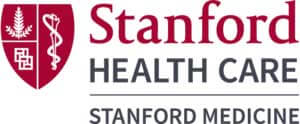Dr. Gordon is an international pioneer in the study of gut microbial ecology and evolution, using innovative methods to interpret metagenomic (genetic material recovered directly from environmental samples) and gut microbial genomic sequencing data. In recent studies, Dr. Gordon’s lab has established that the gut microbiome plays a role in fat storage and obesity. Gordon has used DNA pyrosequencing technology that relies on light detection based on a chain reaction when pryophosphate is released, to perform metagenomics on the intestinal contents of obese mice, demonstrating that the gut microbiota of fat mice possess an enhanced capacity for aiding the host in harvesting energy from the diet. Read his full bio.
Q&A with Honoree Jeffrey Gordon from Washington University in St. Louis
Q1: Why is the microbiome so important in the context of precision medicine?
A: We can’t ignore a part of our body that is composed of tens and tens of trillions cells, albeit microbial – a population that collectively contains at least two orders of magnitude more genes than in our Homo sapiens genome, endows us with attributes and capabilities that we have not had to evolve on our own, and contributes to our intra- and interpersonal biological variations as well as health status. If we are to achieve a comprehensive view of our metabolic, physiologic, immunologic, and even neurologic features, we need to understand how we co-develop postnatally with our microbial communities, the mechanisms that underlie our mutually beneficially relationships with microbes as we mature and age, and how perturbations in this symbiosis, including perturbations that are occuring as a consequence of the marked changes in lifestyles taking place with Westernization/globalization, contribute to disease risk and pathogenesis. Our microbial symbionts are master biological chemists: they ‘know’, how to manipulate our systems and subsystems. Therefore, our microbial communities, their citizens, and their products offer opportunities to develop new diagnostic tests, and discover new therapeutic targets and agents.
Q2a: Advanced sequencing tools are almost a prerequisite these days for successful modern microbiome translational research. What are current limitations to the full understanding and comprehensive diagnosis-to- treatment approaches of an individual’s disorder?
A: Sequencing is the ‘easy’ part. Defining ‘whose there’ in a microbial community (microbiota) or which suite of genes are represented in the collection organisms forming that community (the microbiome) is the first step in the journey of deciphering mechanism and identifying therapeutic targets and agents. DNA-based datasets beg the question of how communty members interact with one another, which genes are expressed in a given community and host context, what biotransformations/metabolic outputs are generated by a community and its component members, and what are the host targets and pathways through which community members shape host biology in health and disease.
As work proceeds in this area, the clear message is that microbial communities are wonderous things: they form; they are able to persist; they adapt nimbly to changing circumstances; they are resilient, and the microbial-microbial- and microbial-host interactions are complex and dynamic. All of us in the lab have a sense of awe, coupled with a feeling of humility, when exploring the terra incognita that is the gut microbiota. While the opportunities for learning are great, the challenges we as a field face with development of informative microbiota-directed diagnostics and precision microbiota-directed therapeutics are formidible. Nonetheless the seemingly insurmountable is being surmounted by a number of groups, and substantial progress is being made.
The journey of discovery begins with defining ‘normal’ for a microbial community in a given body habitat in a given human population; typically this is achieved by defining organismal content and microbial gene repertoire. The task then evolves to ascertaining whether the definition of normal in one population generalizes to others. Subsequently, metrics need to be developed to define/quantify the extent of deviation from normal in disease states and whether such deviation is statistically significant. If significant associations are found, it becomes necessary to determine if this is simply an effect of the disease or a cause. Tests of causality now typically involve preclinical studies in germ-free mice where human donor microbiota from representative individuals with a disease, and from suitable ‘normal’ controls are transplanted into groups of recipient gnotobiotic animals and the degree to which human donor phenotypes are transmitted to the animals is determined. Preclinical proof-of-concept is followed by a ‘dive’ into mechanism.
Preclinical proof-of-concept for microbiota-directed therapeutics can be pursued in these types of animal models that harbor the very microbiota of the population to which therapy will be directed. Questions such as the number of donor microbiota to be tested, the role of factors such as human diet and genotype, and the ‘age-old’ issue of how well mice are able to portray human biology all must be considered. More work needs to be done to assess how well results obtained from gnotobiotic models translate to humans, including issues such as the degree to which effects observed generalize across individuals within a target population, the durability of effects produced, as well as short and long term safety.
Q2b: How much of it is technical, how much is basic microbial understanding, and how much is regulatory?
A: Our understanding of the biological properties/functions of the ever increasing numbers of organisms that are being identified using culture-independent methods remains in most cases rudimentary, especially given the fact that we must view their functions in a community context rather than as isolated entities. The spatial distribution of organisms in body habitats (the biogeographic features of microbial communities) is poorly understood; overcoming this obstacle requires alliances with bioengineers so that new devices/methods for sampling communities are developed. However, there are many reasons to be optimistic. To name just a few:
- Long read sequencing platforms are allowing microbial genomes to be finished more readily, accurately and rapidly.
- New computational methods are being developed that allow microbial genomes to be assembled from whole community shotgun sequencing data. Efforts are underway to improve our ability to culture more and more of the diversity present in microbial communities.
- There is a push to improve annotation of microbial genomes; current annotation schemes are rooted in a very small number of genetically tractable organisms, leaving us with the frustrating situation that a considerable number of genes in a given organism have no known functions (i.e. we can only say that they encode hypothetical or conserved hypothetical proteins).
- For many phylogenetic lineages there are no genetic tools available but CRISPR technology holds the promise of addressing this bottleneck.
- Moving beyond RNA-Seq, advances in mass spectrometry are enabling improved proteomic analysis of microbial gene expression, as well as targeted and non-targeted analysis of microbial community metabolism and microbial-host co-metabolism. This latter advance is key from many perspectives – whether it be understanding how (gut) microbes transform components of food into a metabolic output that includes previous unappreciated essential nutrients to identifying metabolites that interact with various host signaling pathways thereby shaping host biology (there is a world of GPCRs and nuclear hormone receptors that very likely have evolved to accommodate key microbial products.
- New approaches, both ex vivo (e.g. minibioreactors; organ-on-a-chip technologies) and in vivo (invertebrate and vertebrate gnotobiotic animals) are being developed to overcome the combinatorial challenge of efficiently screening different combinations of microbes to ascertain how they interact with one another and function as effectors of host biological processes. The results should faciltate discovery and development of defined consortia of organisms that have evolved to live in a given human body habitat; these next generation probiotics will signal a time when we can implement precision microbiota-directed cellular therapeutics. Methods for formulating consortia of anaerobic organsism so that they can maintain viability prior to administration as next-generation probiotic consortia, need to be and are being developed.
This is an inherently interdisciplinary field that is challenging academic institutions to evolve at many levels. This evolution requires imagination and courage, and includes crafting new educational programs so that students and post-docs can acquire expertise in both computational and experimental biology, thus enabling co-evolution of new technological approaches and the algorithms needed to mine the large datasets emanating from these approaches. Principles, practices, and financial (programmatic) investments are needed to support people from different disciplines in ways that allow them to work in common physical spaces to address multifaceted problems in innovative, highly interactive ways, and to be rewarded for their work together. Democratizing multi-omic instrumentation so that it is accessible directly to students, post-docs, staff and faculty rather than being placed only in core facilities encourages new applications of these instruments, flexibility and innovation, and rapid progress.
We noted in a paper published last year (Green et al., Science 357, 39 (2017)) that “An important question is how will scientific advances in this area affect public attitudes and governmental regulation? Reciprocally, how will regulatory decisions affect scientific progress and society?
“Microbiota-directed foods (MDFs) offer research opportunities to (i) delineate how microbial communities and their members affect our biology, (ii) determine the extent to which it is possible to deliberately reshape community functions through dietary interventions, (iii) characterize the generalizability of these effects and their short and long term safety and efficacy, and (iv) catalyze efforts to identify bioactive natural products derived from the gut microbiota. Development of MDFs will likely help change concepts and definitions of nutritional requirements, nutritional benefits and food safety. They will also likely raise questions in the minds of consumers about what effect a food has (or should have) on their gut microbiota, and what constitutes a ‘healthy’ food. Addressing these issues will necessitate well controlled human studies with measurements of microbiota as well as host parameters. The regulatory classification of MDFs used in these trials will influence their development plans and future uses.”
“The distinction between conventional food and MDF may be inconsequential from a regulatory perspective if the use of the MDF satisfies the criteria for being deemed Generally Recognized as Safe (GRAS), and claims fall within the scope allowable for food. If one or more components of an MDF do not have GRAS status, they cannot be added to conventional food without petitioning the FDA for approval as a new food additive. This, in turn, requires extensive safety testing. Since dietary practices are known to alter microbiota configuration and metabolic output, classification of a MDF as a ‘drug’ would seemingly require specific claims that it mediates reconfiguration to a state known to cure, mitigate or prevent a disease, and that the MDF not be classified as a food. Classification as a drug would entail rigorous evaluation of safety, efficacy and Chemistry, Manufacturing and Controls (CMC) under an Investigational New Drug (IND) application. If a consensus arises in the scientific community that the FDA and lawmakers in Congress should define the gut microbiota as a human organ from a regulatory perspective, the question will arise as to whether a claim that a MDF promotes reconfiguration of community structure or function might lead to its classification as a drug.”
Q3a: When do you see clinical microbiome characterization being implemented in the clinic? What hurdles need to be overcome for full clinical implementation?
A: Standardization of methods for measurement; decisions about what parameters will be measured and are most informative; a knowledge base of what constitutes normal within and between individuals representing a given population/biological state.
Q3b: How far off are we and how much basic research is missing in relation to the understanding of causes, microbial taxa, and health effects from dysbiosis?
A: I can’t provide a general statement. I believe that implementation will depend upon the indication/context. In hospital settings, trials are underway that use biobanked fecal samples or that are working towards identifying next generation probiotics, to establish colonization resistance, eliminate potential pathogens, and reduce infections caused by highly antibiotic resistant bacteria (see E. Pamer, Resurrecting the intestinal microbiota to combat antibiotic-resistant pathogens Science 352, 535 (2016)). Monitoring assembly of the gut microbiota in infants and children during the first several years of postnatal life is likely to be an important part of defining wellness; ensuring development of a healthy diverse microbiota in childhood could have profound, long lived effects on wellness. Defining the impact of the gut microbiota on drug metabolism is an important area to consider for precision medicine.
The Precision Medicine World Conference (PMWC), in its 17th installment, will take place in the Santa Clara Convention Center (Silicon Valley) on January 21-24, 2020. The program will traverse innovative technologies, thriving initiatives, and clinical case studies that enable the translation of precision medicine into direct improvements in health care. Conference attendees will have an opportunity to learn first-hand about the latest developments and advancements in precision medicine and cutting-edge new strategies and solutions that are changing how patients are treated.
See 2019 Agenda highlights:
- Five tracks will showcase sessions on the latest advancements in precision medicine which include, but are not limited to:
- AI & Data Science Showcase
- Clinical & Research Tools Showcase
- Clinical Dx Showcase
- Creating Clinical Value with Liquid Biopsy ctDNA, etc.
- Digital Health/Health and Wellness
- Digital Phenotyping
- Diversity in Precision Medicine
- Drug Development (PPPs)
- Early Days of Life Sequencing
- Emerging Technologies in PM
- Emerging Therapeutic Showcase
- FDA Efforts to Accelerate PM
- Gene Editing
- Genomic Profiling Showcase
- Immunotherapy Sessions & Showcase
- Implementation into Health Care Delivery
- Large Scale Bio-data Resources to Support Drug Development (PPPs)
- Microbial Profiling Showcase
- Microbiome
- Neoantigens
- Next-Gen. Workforce of PM
- Non-Clinical Services Showcase
- Pharmacogenomics
- Point-of Care Dx Platform
- Precision Public Health
- Rare Disease Diagnosis
- Resilience
- Robust Clinical Decision Support Tools
- Wellness and Aging Showcase
See 2019 Agenda highlights:
- Five tracks will showcase sessions on the latest advancements in precision medicine which include, but are not limited to:
- AI & Data Science Showcase
- Clinical & Research Tools Showcase
- Clinical Dx Showcase
- Creating Clinical Value with Liquid Biopsy ctDNA, etc.
- Digital Health/Health and Wellness
- Digital Phenotyping
- Diversity in Precision Medicine
- Drug Development (PPPs)
- Early Days of Life Sequencing
- Emerging Technologies in PM
- Emerging Therapeutic Showcase
- FDA Efforts to Accelerate PM
- Gene Editing / CRISPR
- Genomic Profiling Showcase
- Immunotherapy Sessions & Showcase
- Implementation into Health Care Delivery
- Large Scale Bio-data Resources to Support Drug Development (PPPs)
- Microbial Profiling Showcase
- Microbiome
- Neoantigens
- Next-Gen. Workforce of PM
- Non-Clinical Services Showcase
- Pharmacogenomics
- Point-of Care Dx Platform
- Precision Public Health
- Rare Disease Diagnosis
- Resilience
- Robust Clinical Decision Support Tools
- Wellness and Aging Showcase
- A lineup of 450+ highly regarded speakers featuring pioneering researchers and authorities across the healthcare and biotechnology sectors
- Luminary and Pioneer Awards, honoring individuals who contributed, and continue to contribute, to the field of Precision Medicine
- 2000+ multidisciplinary attendees, from across the entire spectrum of healthcare, representing different types of companies, technologies, and medical centers with leadership roles in precision medicine













